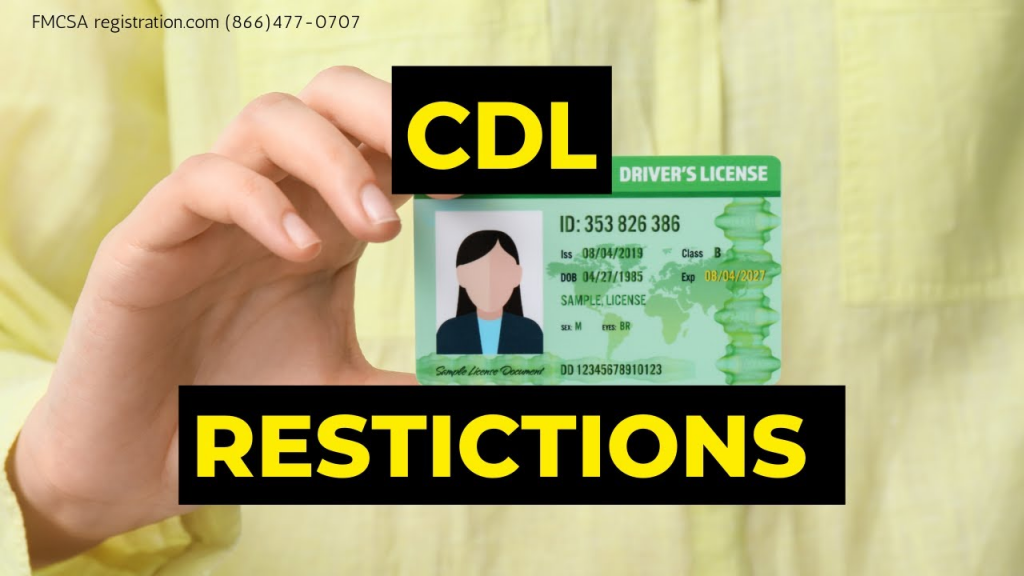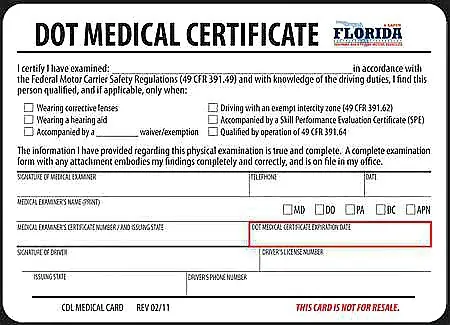Understanding the meaning of each and every CDL restriction code provides you insight into what limitations might be placed upon your Commercial Driver’s License. The codes will detail what kind of vehicles you are licensed to drive, under what conditions, to make certain that you would be competent and qualified to ensure safety and compliance on the road. Whether it’s just a start or an expansion of your driving capabilities, understanding all those tiny details that comprise the CDL restriction codes surely helps one avoid fines but also opens wider perspectives for a commercial driving career. The guide illustrates each code in detail and answers some common questions regarding how these restrictions affect drivers.
CDL restriction codes

These are restriction codes assigned based on certain limitations a driver may have due to the kind of vehicle or equipment he or she is trained to handle. These are usually added by the DMV to your CDL to reflect your training, experience, or some limitations in regard to vehicle equipment. These are in-depth details about each common restriction code:
L: Air brakes restriction
The “L” restriction is applied when a driver fails their air brakes knowledge test, fails to properly identify air brake system components, or fails to perform an air brake system check properly, or when they take their skills test in a vehicle that does not use a complete air system. This will prevent a driver from operating any vehicle that has full air brakes on it until proper training and testing have occurred. Additional training and testing on how to operate air brakes would be required in order to remove this restriction.
Z: No full air brake system
The “Z” restriction tends to limit you to those vehicles that are not equipped with the full air brake system; this may also involve drivers who have undergone partial air brake systems training, such as hydraulic brakes training. Similar to the “L” restriction, you can only get this removed through training and testing in air brakes.
E: No manual transmission
“E” restriction means you can only drive vehicles that have automatic transmissions. This can be added to your CDL if you do not take your test in a vehicle that has a manual transmission. To have this “E” restriction removed, you will have to take your CDL skills test in a vehicle that has a manual transmission.
O: No tractor-trailer
If you see an “O” restriction, that means you are restricted to operating only non-tractor-trailer commercial vehicles. This restriction is normally put in place if your training for a CDL and the skills test that you took was not taken in a vehicle that consisted of a tractor-trailer combination vehicle. Removing this restriction requires taking a skills test in a tractor-trailer.
M: No class A passenger vehicle
The “M” restriction is added if a driver has a Class A CDL but has taken their passenger or school bus endorsement in a Class B vehicle. In such cases, the state would have to add an “M” restriction to the CDL, which would restrict the driver to operating only Class B and Class C passenger vehicles or school buses. This ensures that the driver will not drive larger Class A passenger-carrying vehicles without the proper training and testing for that class of vehicle. To remove the “M” restriction you will be required to take additional training and pass the skills test in a Class A passenger vehicle.
N: No class A and B passenger vehicle
The “N” restriction applies when the driver has a Class B CDL but has taken a passenger or school bus endorsement in a Class C vehicle. In this case, the state must place an “N” restriction on the CDL. This would indicate that the driver shall only be allowed to operate Class C passenger vehicles or school buses. This restriction helps ensure that an operator does not drive larger Class A or B passenger-carrying motor vehicles without first obtaining the proper testing and training for the class of vehicle they will be operating.
To remove the “N” restriction you must receive training in and take the skills tests for Class A or B passenger-carrying vehicles. This will certify you to drive larger passenger-carrying vehicles in those respective classes.
V: Medical variance
The “V” restriction code is to be added in cases when a driver has been granted a medical variance by the FMCSA, indicating certain medical conditions to qualify. In instances where the state is notified of this variance, they must report this on both the CDLIS driving record and the CDL itself using the “V” restriction code. This code serves as a notification that further information concerning the driver’s medical variance is recorded in the CDLIS record. Hence, ensuring that the driver’s medical clearance for commercial driving is noted by the state officials concerned, and by anyone relevant.
For an organically restricted “V” to be removed, you will need to meet the FMCSA physical requirements without the issuance of a waiver or exemption. Once you provide updated medical paperwork indicating that you are clear to drive without restriction, the restriction will be removed from your CDL.
K: Intrastate only restriction
The “K” restriction permits a driver to operate commercial vehicles only within the state of issuance and not across state lines. This is normally issued to those who do not meet the medical requirements by federal law to cross state lines. Another reason for this is they are in the age of 18-21 that are not permitted to drive across states per FMCSA regulations. In removing this “K” restriction, you would have to submit documentation of meeting FMCSA medical requirements to drive across state lines and you will have to apply to the State DMV for an upgrade once you reach above age 21.
P: No passengers in CMV bus
This “P” restriction indicates you cannot carry passengers in a commercial motor vehicle. This is usually issued because the driver has not driven with passengers in the vehicle when taking the passenger endorsement test. Removing the “P” restriction would require you to take the passenger endorsement test with the appropriate load of passengers and demonstrate capabilities to transport passengers safely.
X: No cargo in tank vehicle
The “X” restriction is placed on your CDL to indicate that the driver is not permitted to transport cargo in a tank vehicle, even with the tanker endorsement. This usually comes into place if the driver has never been tested driving a loaded tank. To have the “X” restriction removed, you must undergo the skills test in a fully loaded tank vehicle to prove that you can safely manage cargo in a tank configuration.
FAQs
1. What does cdl restriction code B mean?
The CDL restriction code “B” involves driving with corrective lenses such as glasses or contact lenses. This helps drivers to attain the minimum requirement of the traffic vision standard.
2. How to remove O restriction on CDL?
To remove the “O” restriction that restricts you from operating a tractor-trailer, a skills test with a tractor-trailer type of vehicle is required. When you pass this test, that would mean you are capable of driving such vehicles safely, and the “O” restriction would be removed.
3. How to remove restriction K on CDL?
The “K” restriction prohibits you from crossing any state line in your rig. If you want to remove this restriction, you have to send along some medical documentation showing that you meet the federal requirements for interstate travel.
Final thoughts
CDL restriction codes are very important in ensuring that drivers are qualified to drive their specific vehicles under specific conditions. Moreover, understanding what each code means helps the driver in taking steps toward the removal of restrictive codes that hamper a driver’s opportunities. Whether through upgrading skills further with additional training or through the passing of specific tests, knowing your restriction codes will help you stay compliant and safe while maximizing your career potential as a commercial driver.



